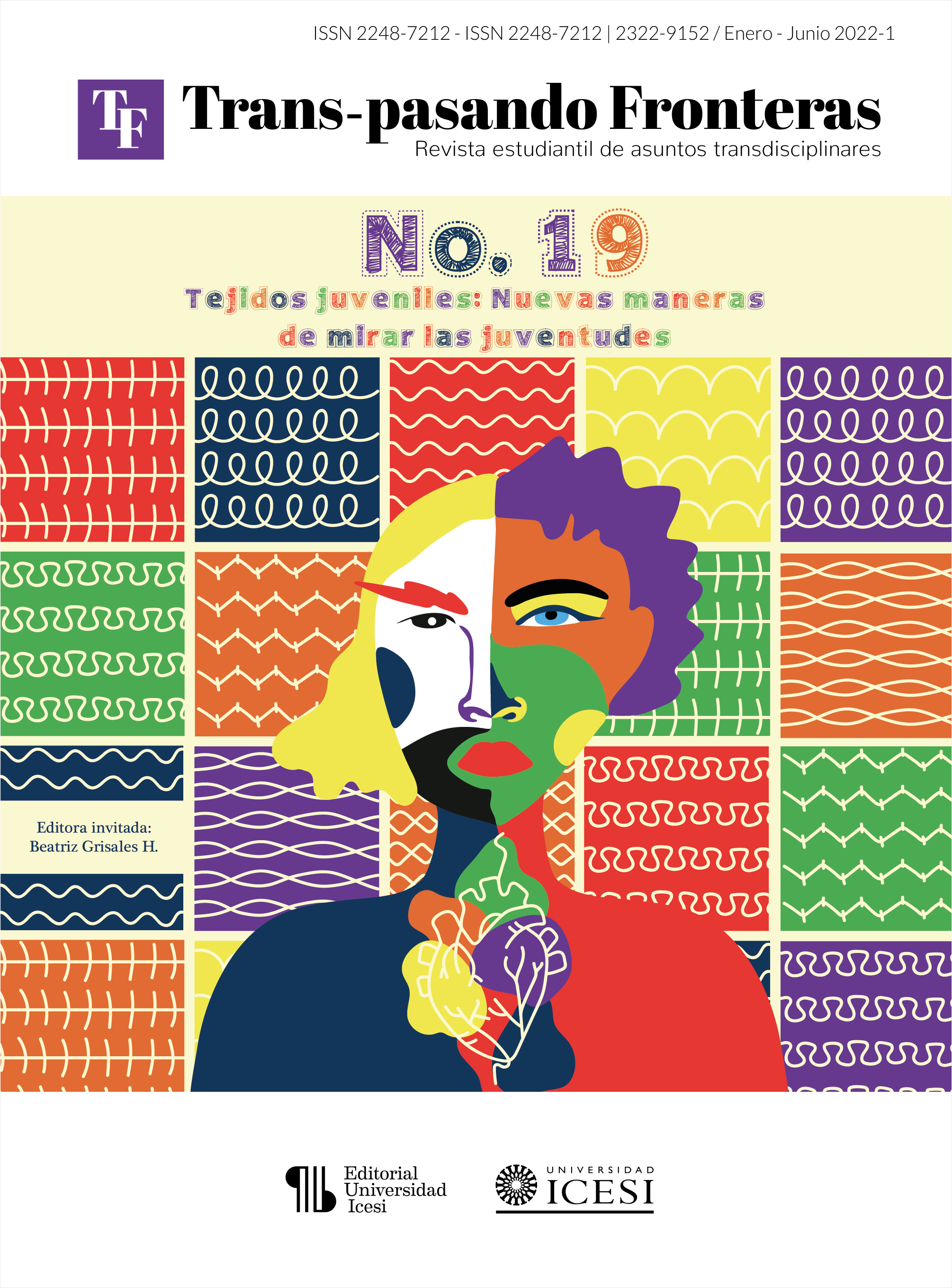La Orientación sexual y la empatía en adultos heterosexuales y homosexuales
DOI:
https://doi.org/10.18046/retf.i19.5679Keywords:
Orientación sexual, empatía, empatía situacional, homosexualidad, heterosexualidad, discriminación, discapacidadAbstract
The present research analyzed the relation between sexual orientation and levels of empathy in homosexual and heterosexual adults towards situations of discrimination due to sexual orientation and disability. A questionnaire related to the dimensions of the Interpersonal Reactivity Index (IRI) was performed to measure the situational empathy (cognitive and affective) of the participants and, additionally, an identification task with a victim’s story to assess emotional rapport. The hypotheses were that homosexual participants would have higher levels of empathy than heterosexual participants towards victims, regardless of discrimination; and that homosexual participants would be more empathetic when the person is discriminated because of their sexual orientation. The results supported the hypotheses: homosexual participants showed higher levels of situational empathy compared to heterosexual participants for both situations of discrimination; and homosexual participants presented higher levels of situational empathy for situations of discrimination based on sexual orientation than for disability. These findings suggest a strong relation between the "sexual orientation" variable and the level of situational empathy. The research could broaden the theoretical field of empathy, sexual orientation, its relationship with discrimination and its influence on the recognition of sexual diversity.
Downloads
References
Besel, L. & Yuille, J. (2010). Individual differences in empathy: The role of facial expression recognition. Personality and Individual Differences, 49 (1), 107-112.
Cid-Aguayo, M., Pérez-Villegas, R. & Sáez-Carillo, K. (2011). Orientación sexual en los adolescentes y su asociación con variables demográficas, socioconductuales y sexuales. Perinatología y Reproducción Humana, 25(2), 74-80. https://www.medigraphic.com/pdfs/inper/ip-2011/ip112c.pdf
CIDH. (2015). Violencia contra Personas Lesbianas, Gay, Bisexuales, Trans e Intersex en América, OEA, 2(36), p. 2-308. http://www.oas.org/es/cidh/informes/pdfs/violenciapersonaslgbti.pdf
Davis, M. (1980). A Multidimensional Approach to Individual Differences in Empathy. JSAS Catalog of Selected Documents in Psychology, 10(1), 1-19. https://www.uv.es/~friasnav/Davis_1980.pdf
Davis, M. (1983). Measuring individual differences in empathy: Evidence for a multidimensional approach. Journal of Personality and Social Psychology, 44(1), 113-126. https://doi.org/10.1037/0022-3514.44.1.113
Fernández-Pinto, I., López-Pérez, B. & Márquez, M. (2008). Empatía: Medidas, teorías y aplicaciones en revisión. Anales de Psicología, 24(2), 284-298. https://doi.org/10.6018/analesps
Fuentes, M., López, F., Etxebarria, I., Ledesma, A., Oortiz, M. & Apocada, P. (1993). Empatía, Role-taking y concepto de ser humano, como factores asociados a la conducta prosocial/altruista. Infancia y aprendizaje, (1)63, 73-87.
Gallagher, H. & Frith, C. (2003). Functional imaging of ‘Theory of Mind’. Trends in cognitive sciences. 7 (2), 77-83. https://doi.org/10.1016/S1364-6613(02)00025-6
Kleiman, S., Grant, N. & Spanjerman L. (2015). Translating Oppression: Understanding How Sexual Minority Status is Associated with White Men’s Racial Attitude. Psychology of Men & Masculinity, 16(4), 404-415. https://doi.org/10.1037/a0038797
Larrain, P., Mollo-Torrico, J. & Garaigordobil, M. (2020). Rasgos de personalidad y bullying LGBT-fóbico: Una revisión. Interdisciplinaria, 37(2), 7-22. http://doi.org/10.16888/interd.2020.37.2.1
López, M., Filippetti, V. & Richaud, M. (2014). Empatía: desde la percepción automática hasta los procesos controlados. Avances en Psicología Latinoamericana, 32(1), 37-52. https://doi.org/10.12804/apl32.1.2014.03
Martxueta, A. y Etxeberria, J. (2014). Análisis diferencial retrospectivo de las variables de salud mental en lesbianas, gays y bisexuales (LGB) víctimas de bullying homofóbico en la escuela. Revista de Psicopatología y Psicología Clínica, 19(1), 23-35. http://doi.org/10.5944/rppc.
Mayock, P., Bryan, A., Carr, N. y Kitching, K. (2009). Supporting LGBT Lives: A Study of the Mental Health and Well-Being of Lesbian. Gay, Bisexual and Transgender People, National Office of Suicide Prevention, GLEN and BeLonG To Youth Service, Dublin. Recuperado de: https://www.hse.ie/eng/services/publications/mentalhealth/suporting-lgbt-lives.pdf
Miller, D., Smith, E. & Mackie, D. (2004). Effects of Intergroup Contact and Political Predispositions on Prejudice: Role of Intergroup Emotions. Group Processes & Intergroup Relations, 7(1), 221-237.
Muñoz, A. & Chaves, L. (2013). La empatía: ¿un concepto unívoco? Katharsis, 16(1), 123-143. https://doi.org/10.25057/25005731.467
Nettle, D. (2007). Empathizing and systemizing: What are they, and what do they contribute to our understanding of psychological sex differences? British Journal of Psychology, (1)98, 237–255. https://doi.org/10.1348/000712606x117612
Paterson, L., Brown, R. & Walters, M. (2019) Feeling for and as a group member: Understanding LoGBT victimization via group-based empathy and intergroup emotions. British Journal of Social Psychology, 1(58), 211–224.
Perry, D., Walder, K., Hendler, T. & Shamay-Tsoory, S. (2013). The gender you are and the gender you like: sexual preference and empathic neural responses. Brain research, 15(34), 66–75. https://doi.org/10.1016/j.brainres.2013.08.040
RedLac. (2019, septiembre). El impacto de la violencia sobre la comunidad LGBTI en el Norte de Centroamérica [comunicado de prensa]. https://reliefweb.int/sites/reliefweb.int/files/resources/BOLETIN%20REDLAC%206%20-%20SEPTIEMBRE%202019%20-%20ESPAN%CC%83OL.pdf
SEGOB. (2016). Glosario de la diversidad sexual, de género y características sexuales (1.a ed.). Consejo Nacional para Prevenir la Discriminación.
Schmider, E., Ziegler, M., Danay, E., Beyer, L., & Bühner, M. (2010). Is It Really Robust?: Reinvestigating the robustness of ANOVA against violations of the normal distribution assumption. Methodology, 6(4), 147–151. https://doi.org/10.1027/1614-2241/a000016
Sergeant, M., Thomas E., Dickins, M., Davies, N. & Griffiths, M. (2006). Aggression, empathy and sexual orientation in males. Personality and Individual Differences, 40(3), 475-486. https://doi.org/10.1016/j.paid.2005.07.002
Wang, Y., Davidson, M., Yakushko, O., Savoy, H., Tan, J. & Bleier, J. (2003). The scale of ethnocultural empathy: Development,validation, and reliability. Journal of Counseling Psychology, 50(1), 221–234. https://doi.org/10.1037/0022-0167.50.2.221
Zheng, L & Zheng, Y. (2015). Sex and sexual orientation differences in empathizing-systemizing cognitive styles in China. Personality and Individual Differences, 87(1), 267-271. https://doi.org/10.1016/j.paid.2015.08.014
Xu, Y., Norton, S. & Rahman, Q. (2017) Sexual orientation and neurocognitive ability: A meta-analysis in men and women. Neuroscience and Biobehav, 83(1), 691-696. https://doi.org/10.1016/j.neubiorev.2017.06.014
Downloads
Published
Issue
Section
License
Trans-pasando Fronteras provides immediate open access to its content on the principle that making research freely available to the public supports a greater global exchange of knowledge.
© Authors hold copyright and publishing rights without restrictions but in accordance with the CC license.
All the material in this publication can be reproduced as long as reference is made to title, author and institutional source.







